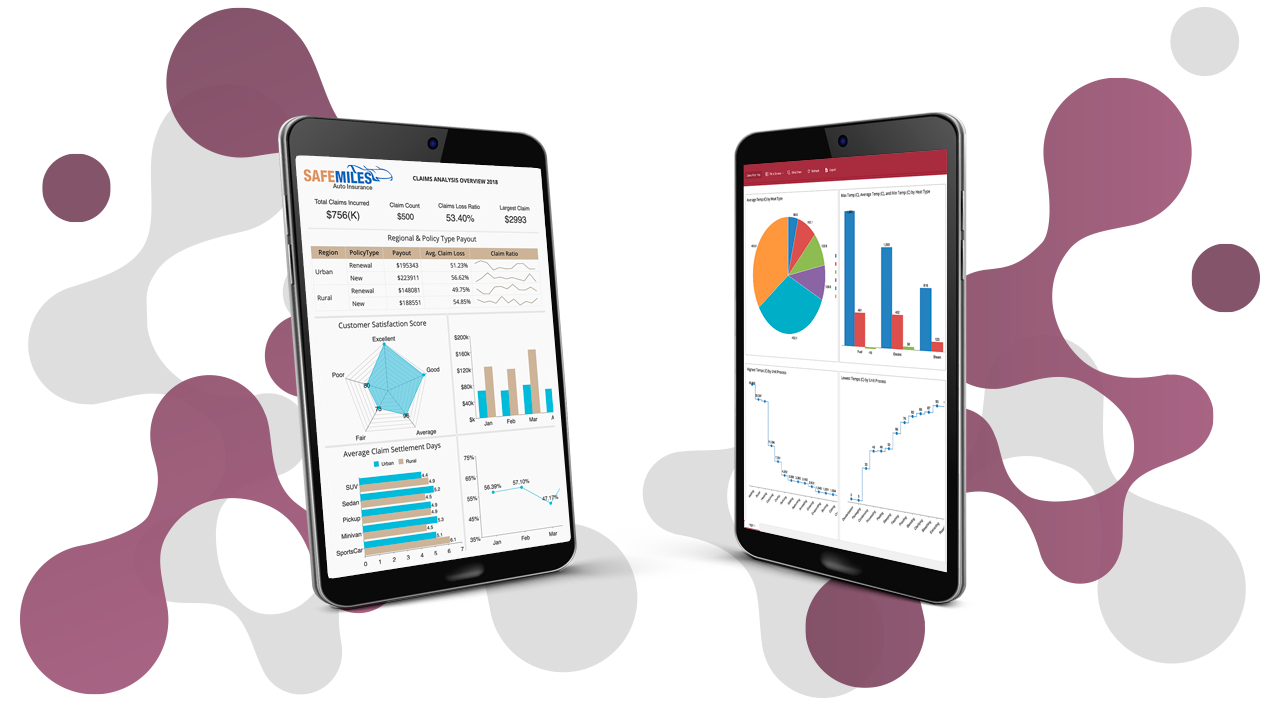Two of the hottest jobs on the planet right now are data scientists and data analysts. According to the Bureau of Labor Statistics, the number of jobs available in these two categories is forecast to grow by 22% by 2030 — more than four times the rate of the average job category.
In today’s competitive job market, companies are increasingly struggling to hire and retain top talent for their data analytics and business intelligence. However, the need to leverage data for analysis continues to grow. Companies are compensating by adopting self-service analytics to democratize this data without having to type up IT and data teams for everything.
Data on its own can be difficult to read. In the past, companies had to rely on data teams to collect, find, sort, and analyze the data for organizations. This was labor-intensive and prohibitive for executives and others to understand without IT support. Today, though, self-service analytics are making data more available and readable to team members at all levels.
The self-service data analytics market is growing as well. Valued at $6.1 billion in 2020, it’s projected to reach a market value of $19.3 billion by 2028 with a 15.44% compound annual growth rate (CAGR).
The Importance of Actionable Insights
McKinsey's research shows that being data-driven and leveraging analytics results in companies that are 23 times more likely to attract customers and six times more likely to retain new customers. Also, companies that made extensive use of customer analytics outperformed their competitors by a wide margin when it came to sales, growth, ROI, and profitability:
- 126% more profitable
- 131% more sales
- 186% larger sales growth
- 132% higher ROI
Due to the COVID pandemic, data-driven decision-making has perhaps never been more important.
Still, companies need to make this data available for more team members and reduce the need for expensive and highly-trained professionals to process the data for use. That’s where self-service analytics come in.
The Benefits of Self-Service Analytics
There are significant benefits from adopting self-service analytics. A study in the Harvard Business Review revealed that 72% of organizations providing their team members with self-service tools and embedded analytics saw a significant increase in productivity. By making the data available and empowering their front-line employees to make data-driven decisions, these companies saw more than 10% annual revenue growth.
By making data more available to the C-suite and frontline workers, it enables business users with limited or no IT background to pull and customize data. Such tasks as queries, reports, data visualization, and more can be created easily. This helps search for data insights and surface trends that may only be seen from data analysis.
With the right self-service tools, any user can be trained to create rich reports and develop and read dashboards.
Embedding self-service analytics tools into existing applications allows for a seamless BI experience, so users don’t have to learn new platforms. This provides in-context analysis within tools users are already comfortable using. In many cases, users won’t even know there’s a third-party engine working behind the scenes to make the data available.
One of the most powerful benefits of self-service analytics is the increased visibility you get. Teams can pull insights more quickly and broadly without having to wait for data scientists to get back to them. This allows users to set their own priorities and slice and dice the data in different ways to meet their needs. This reduces the time spent searching to make the entire process more efficient.
The Challenges to Self-Service Analytics
There are some inherent challenges with self-service analytics, but most of them are common to any data-driven environment. For example, GIGO still applies.
GIGO = Garbage In, Garbage Out.
As any data scientist knows, the quality of the outcomes is only as good as the quality of the data. Bad data can lead to bias or show conclusions that can’t logically stem from the underlying data. Even small inaccuracies can impact conclusions.
Even with self-serve tools, you still need someone to validate the data and clean it to eliminate inaccuracies, corruption, and inaccurate or irrelevant data.
Data governance is crucial to accurate results.
Not Controlling for Bias
You also need to control for bias or unintended bias. Bias can creep into data models easily if the data is incomplete or inaccurate. Users also need to be trained to recognize the signs of bias. For example, often users will have a hypothesis and go looking for data to support their conclusion. This can create inaccurate results by picking only data that supports the concept and ignoring other data within datasets.
Lack of Training
Self-service analytics users need to be coached to lead the data lead the way to a conclusion. Once consensus is reached, it also helps to validate the conclusion by having data analysts validate the underlying data.
Improper Use of Data
One significant benefit of self-service analytics is that users can view disparate data sets. However, this can also cause users to come to poor decisions if they aren’t looking at the right data.
Here, you can learn more about overcoming self-service adoption obstacles.
How can Enterprises Succeed with Self-Service Analytics?
When organizations are diving into self-service analytics, they need to choose an analytics platform and establish best practices for business intelligence.
Provides Control and Governance of Data
Balancing the need for accurate data, security, and business impact means you need tight control over data. You need to be able to manage rights and access privileges to ensure those with a business need can access the data they need while preventing unauthorized users from accessing it. With data governance and role-based permissions protocols self-service analytics is secure.
Data governance is essential to establishing processes, roles, policies, standards, and integrity to assure data quality and reliability. Tight controls may also be needed to maintain compliance with company, industry, or government regulations.
Accessible by Tech and Non-Tech Users
Your data scientists may be very comfortable with Python or R programming languages and using tools like Hadoop, Tableau, SOL, TensorFlow, and Rapid Miner. Outside of CIOs and CISOs, C-suite executives may not have this technical expertise.
To get widespread adoption, self-service data analytics tools must be useable at a variety of levels. While the data team may need a higher level of access and analytic tools, others need only basic dashboard (at-a-glance) visualizations or basic sorting, filtering, and grouping capabilities.
Integration with Other Platforms
Embedded analytics allows you to integrate data within other applications. Not only does this make it easier for the end-user, but it also reduces the amount of time it takes for users to learn new software or data teams to prep data. Team members can save significant time when they don’t have to build custom applications or maintain multiple platforms.
Intuitive and Easy to Use
Self-service analytics should be intuitive and user-friendly. If your platform is difficult to use or has a long learning curve and extensive training, your data will likely sit on the shelf instead of being used.
Eliminates Data Silos
Many companies are drowning in data but often left with no easy way to use it. A lot of data is siloed in specific applications or only accessible by certain departments or team members. A Forrester research study quantified this by saying as much as 60% to 73% of all data gathered by companies goes unused for analytics.
Self-serve tools need to eliminate data silos and bring data together into a single platform.
Make Data-Driven Decisions
It’s clear that embracing data and business intelligence is important to the future of businesses. In a study by Accenture, 79% of executives said that companies failing to embrace Big Data are likely to lose their competitive position and may face extinction.
Self-service analytics not only helps companies embrace Big Data but makes it available to frontline workers for better data-driven decisions.
Understand the Story Behind Your Data
Wyn is a web-based BI and data analytics platform that provides greater insight into your data.
Wyn offers built-in tools for report and dashboard creation, data governance, security integration, embedded BI, automated document distribution, and a business-user-friendly interface for self-service business intelligence.





























